Toby Keith’s powerful baritone and songwriting prowess resonated deeply within the country music landscape for decades. Known for his charismatic stage presence and songs spanning humor, heartfelt romance, and patriotic anthems, Keith carved a unique niche in the industry. Even touching upon post-9/11 sentiments, his music remained distinctly his own, cutting through the homogenized sounds prevalent in country radio. The Oklahoma native’s passing on Monday at 62, after a courageous battle with stomach cancer, marks the end of an era. His extensive catalog, largely self-penned, solidifies his place as a future Country Music Hall of Famer. This list explores some of Toby Keith’s best songs, celebrating the enduring impact of his musical contributions.
‘Should’ve Been a Cowboy’ (1993)
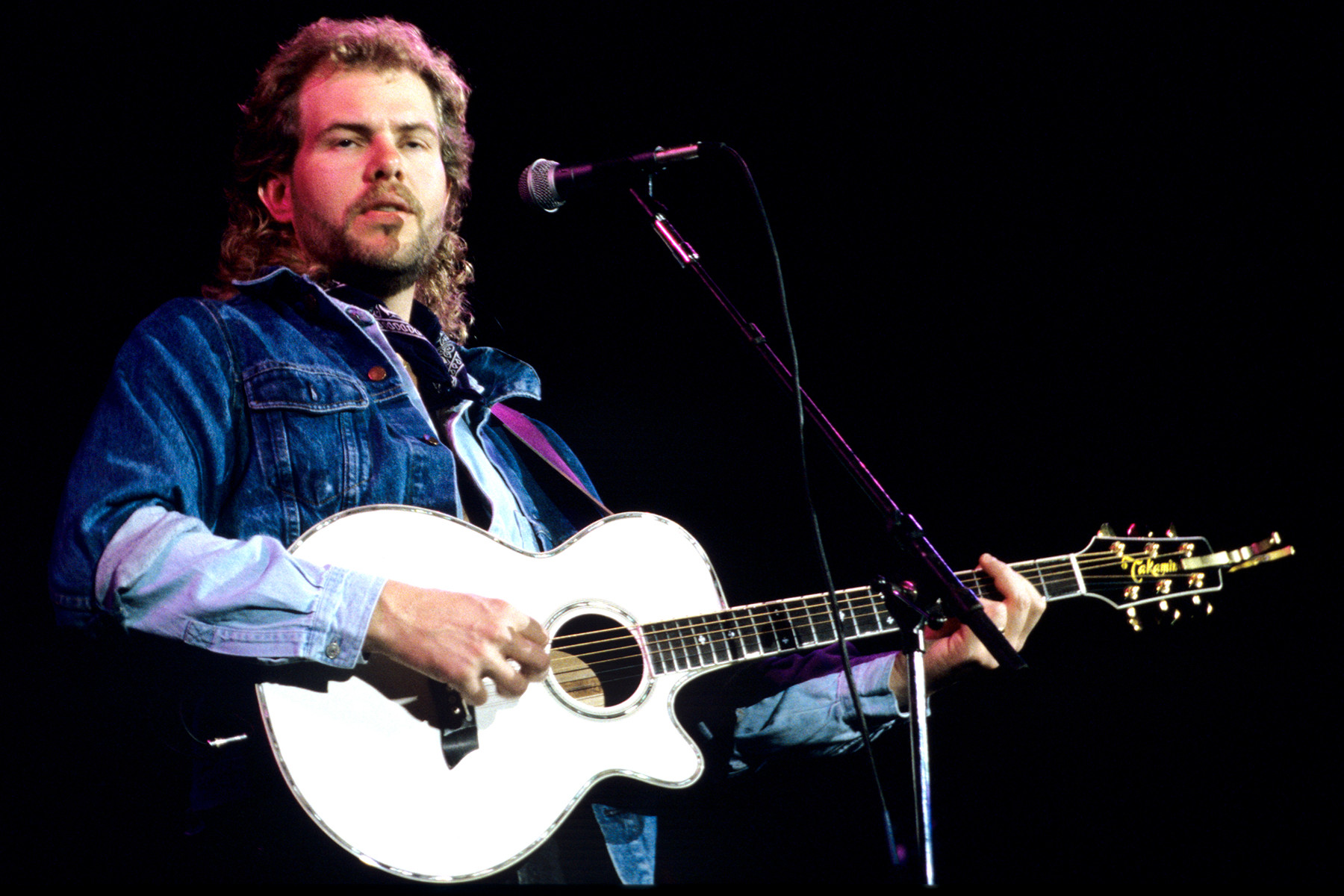 Toby Keith performs at Shoreline Amphitheatre on October 14, 1993 in Mountain View California.
Toby Keith performs at Shoreline Amphitheatre on October 14, 1993 in Mountain View California.
Image Credit: Tim Mosenfelder/Getty Images
“Should’ve Been a Cowboy,” Toby Keith’s debut single, exploded onto the scene with the energy of a runaway train, swiftly reaching Number One on Billboard’s Hot Country Songs chart within a mere four months. Even thirty years later, the song’s appeal remains potent, particularly as cowboy imagery enjoys a resurgence in mainstream country music. Written solely by Keith, the lyrics paint a vivid picture of the romanticized West, peppered with nostalgic nods to iconic TV cowboys like Roy Rogers, Gene Autry, and Matt Dillon from Gunsmoke. This self-awareness of fantasy versus reality is key; Keith acknowledges the allure of the gunslinger persona while grounding it in the relatable notion of “should’ve been,” but ultimately wasn’t, highlighting the aspirational nature of the cowboy myth. The song’s enduring popularity is a testament to its catchy melody and universally appealing theme of escapism and idealized heroism.
‘I Wanna Talk About Me’ (2001)
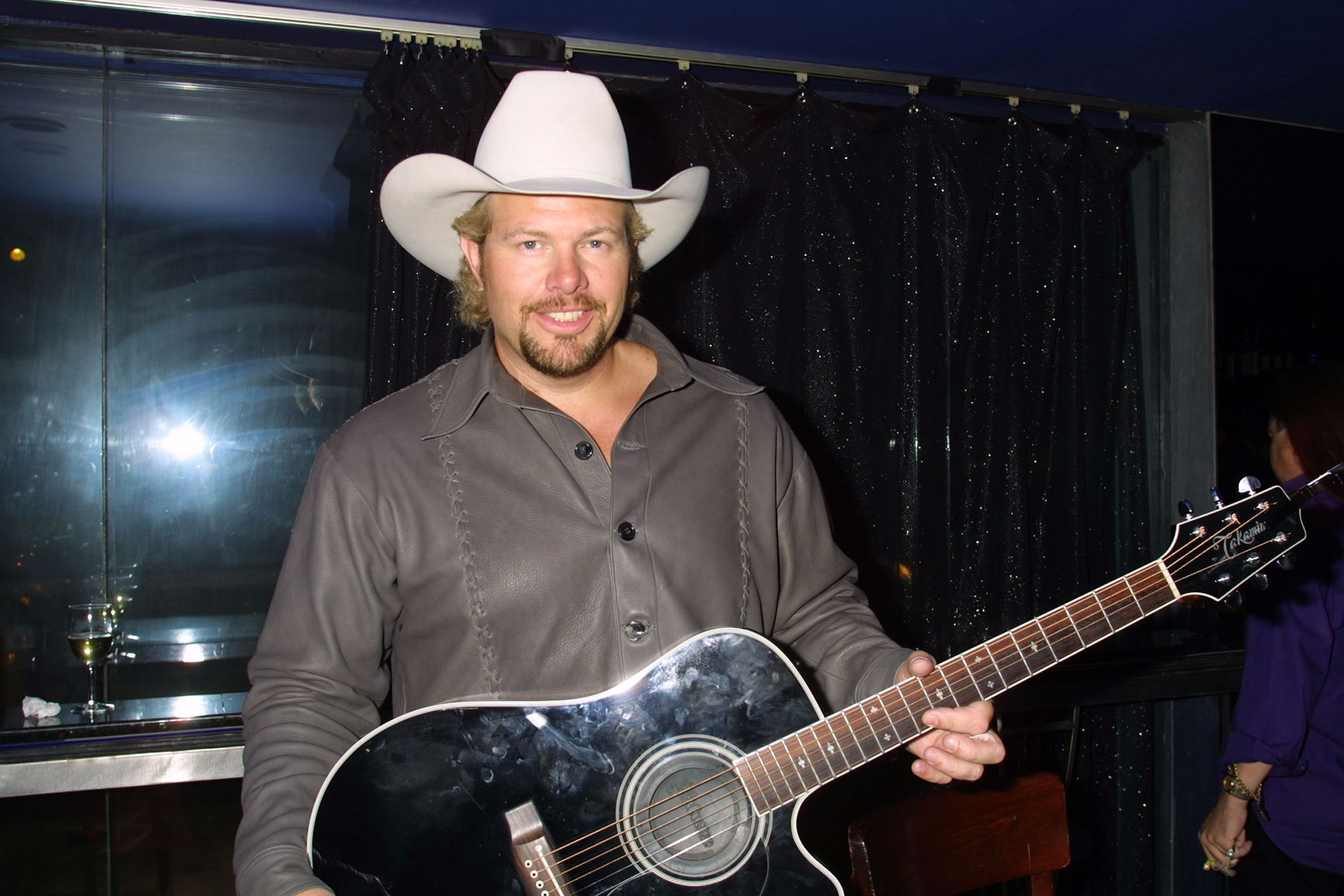 Toby Keith during Country Recording Artist Toby Keith Performs at One51 in New York City, New York, United States.
Toby Keith during Country Recording Artist Toby Keith Performs at One51 in New York City, New York, United States.
Image Credit: Sylvain Gaboury/FilmMagic
“I Wanna Talk About Me” stands out as Toby Keith’s most playfully irreverent hit, and undeniably one of his biggest commercial successes. This track, a tongue-in-cheek commentary on relationships and communication, resonated with audiences for its relatable scenario of a man yearning to be heard amidst constant chatter. Initially offered to a young Blake Shelton, the song found its perfect voice in Keith, who delivered it with his signature blend of humor and swagger. Its genre-bending approach, incorporating spoken-word elements, was ahead of its time, sparking conversations about the evolving sound of country music. Keith himself astutely observed the double standards often placed on country artists, arguing for genre evolution and rejecting the pressure to solely emulate past sounds. “I Wanna Talk About Me” topped the charts for five weeks, proving its broad appeal and solidifying Keith’s position as a musical innovator.
‘As Good As I Once Was’ (2005)
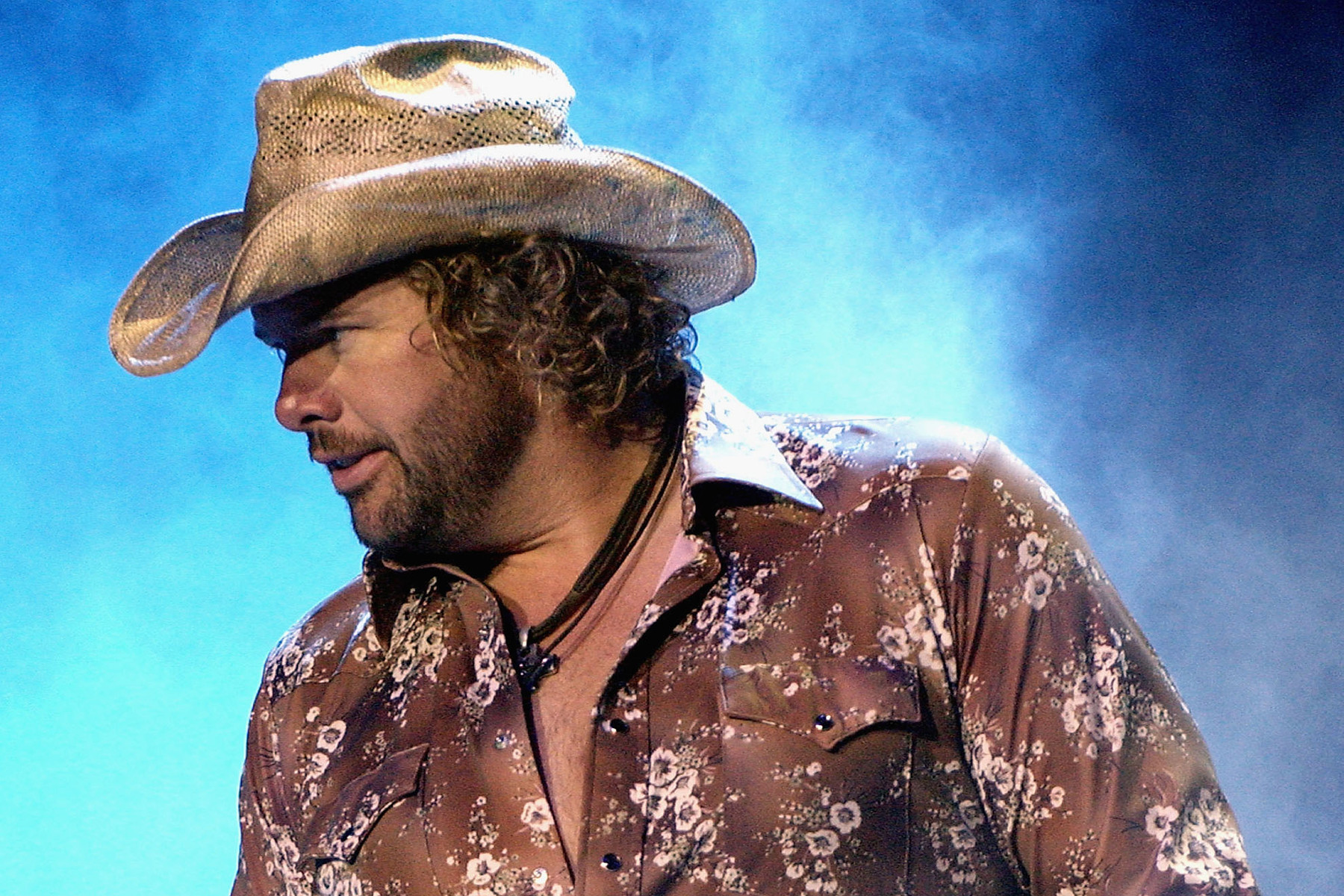 Toby Keith performs in support of his
Toby Keith performs in support of his
Image Credit: Tim Mosenfelder/Getty Images
Often likened to Toby Keith’s version of Billy Joel’s “Piano Man,” “As Good As I Once Was” offers a compellingly catchy and unashamedly candid glimpse into the life of a middle-aged bachelor navigating the social scene of a small-town bar. Co-written with his frequent collaborator Scotty Emerick, this song became another massive hit for Keith in the 2000s. Its humorous and relatable lyrics, even touching on themes of aging and physical changes with a lighthearted approach, struck a chord with a wide audience. The song’s recognition as a BMI “Song of the Year,” despite its unconventional subject matter, underscores Keith’s talent for finding universal truths in everyday experiences. His songwriting, deeply rooted in the lives of ordinary people and their often humorous struggles, propelled “As Good As I Once Was” to triple platinum status, solidifying its place as a fan favorite.
‘You Shouldn’t Kiss Me Like This’ (2000)
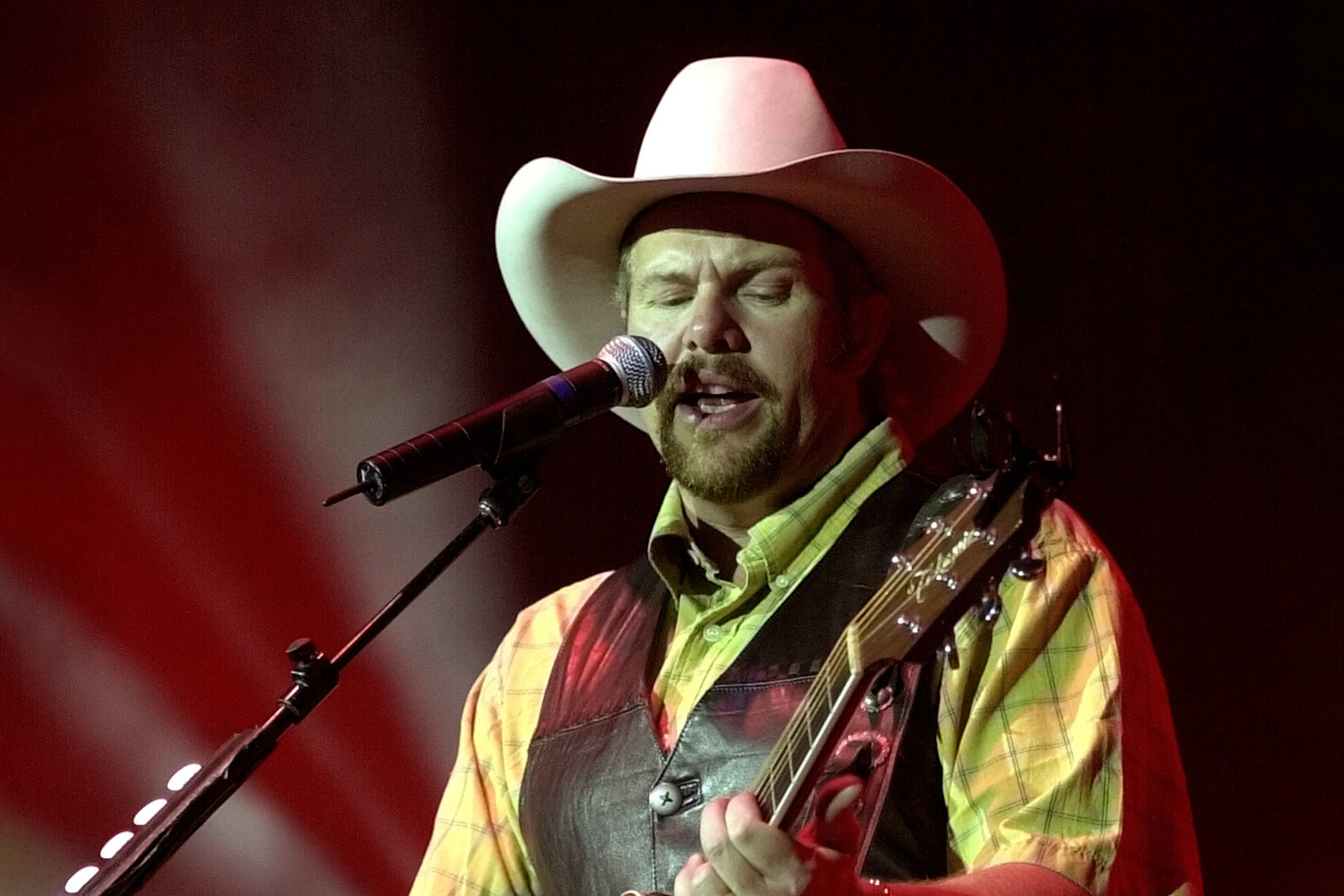 Toby Keith performs his set at the KIKK/KILT Country Jam Saturday, Oct. 28, 2000, in The Woodlands, Texas.
Toby Keith performs his set at the KIKK/KILT Country Jam Saturday, Oct. 28, 2000, in The Woodlands, Texas.
Image Credit: Brett Coomer/Houston Chronicle/Getty Images
“You Shouldn’t Kiss Me Like This” showcases Toby Keith’s prowess in crafting sultry love songs, albeit with a lyrical undercurrent of caution and clear boundaries. This track, from the album How Do You Like Me Now?!, explores the delicate moment of transition from friendship to romance. The chorus, with its repeated warning, “You shouldn’t kiss me like this/Unless you mean it like that,” effectively captures the protagonist’s apprehension and desire for clarity. Another solo write by Keith that topped the charts, the song highlights his ability to connect with listeners on an emotional level. While Keith often emphasized his songwriting over his vocal abilities, this ballad, delivered with exquisite sensitivity, firmly established him as one of country music’s finest balladeers, capable of conveying both vulnerability and strength.
‘How Do You Like Me Now?!’ (1999)
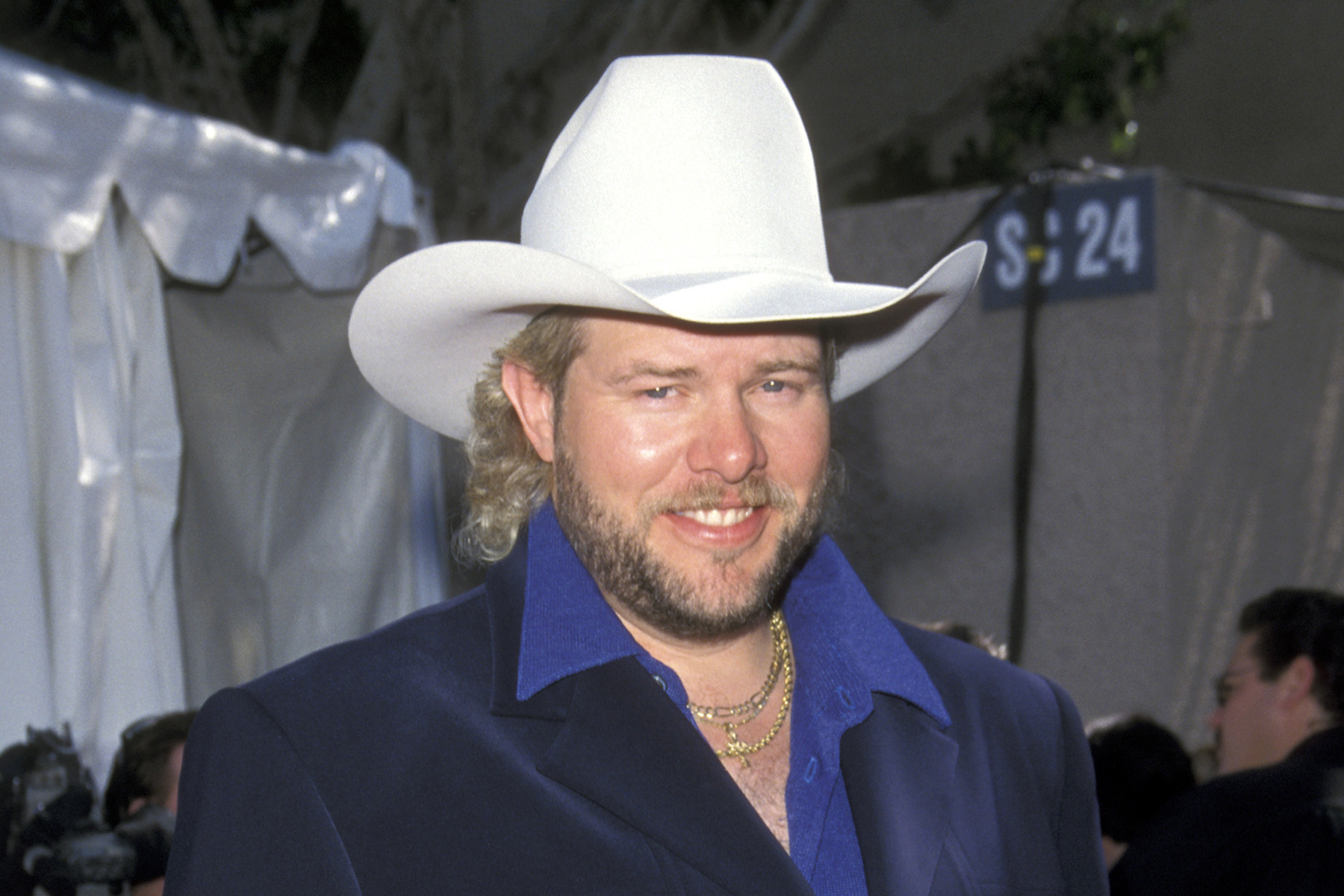 Toby Keith during 34th Annual Academy of Country Music Awards at Universal Ampitheater in Universal City, California, United States.
Toby Keith during 34th Annual Academy of Country Music Awards at Universal Ampitheater in Universal City, California, United States.
Image Credit: Ron Galella/Ron Galella Collection/Getty Images
“How Do You Like Me Now?!” is the quintessential Toby Keith anthem of triumphant vindication, served with a generous helping of schadenfreude. While many artists have touched upon the theme of overcoming past doubters, Keith’s rendition is particularly potent and unapologetically boastful. The lyrics vividly depict the fantasized comeuppance of those who had dismissed him, reveling in their presumed current unhappiness and regret. This sassy, defiant anthem marked a turning point in Keith’s career, reigniting his momentum after a period of less successful ballads. Initially, label executives reportedly hesitated to release the song, fearing its edgy tone. However, Keith’s instincts proved correct. “How Do You Like Me Now?!” became his first crossover hit, breaking into the Billboard Hot 100 and launching a string of Number One country hits in the early 2000s, cementing his status as a major force in country music.
‘Beer for My Horses’ (2003)
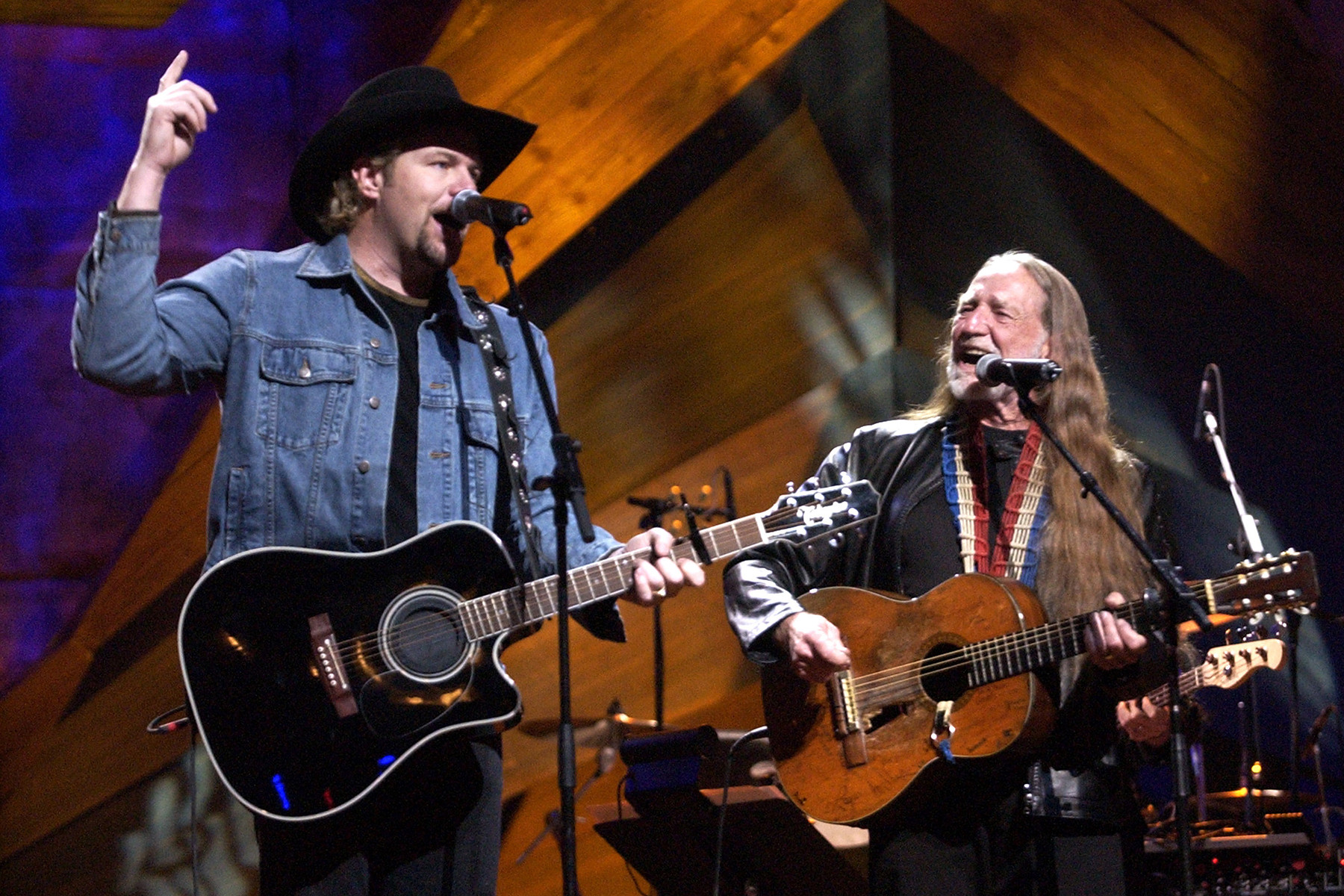 Toby Keith and Willie Nelson during "Willie Nelson and Friends: Live and Kickin
Toby Keith and Willie Nelson during "Willie Nelson and Friends: Live and Kickin
Image Credit: Kevin Mazur/WireImage
This collaboration with country music legend Willie Nelson, “Beer for My Horses,” became an instantly recognizable modern-day cowboy anthem, though not without sparking controversy. While undeniably catchy, the song’s anti-crime message, advocating for vigilante justice, drew criticism for its potentially violent undertones. Lyrics like “Take all the rope in Texas, find a tall oak tree/Round up all them bad boys, hang them high in the street,” while intended to be a symbolic expression of frustration with crime, were interpreted by some as an endorsement of extrajudicial actions. Willie Nelson’s presence on the track arguably softened its harsher edges, lending a paternal gravitas to the message. Despite the controversy, “Beer for My Horses” dominated the country charts, holding the Number One spot for six weeks. Its popularity even extended to a film adaptation starring Keith, Nelson, and comedian Rodney Carrington, demonstrating the song’s broad cultural impact, even amidst its contentious themes.
‘Don’t Let the Old Man In’ (2018)
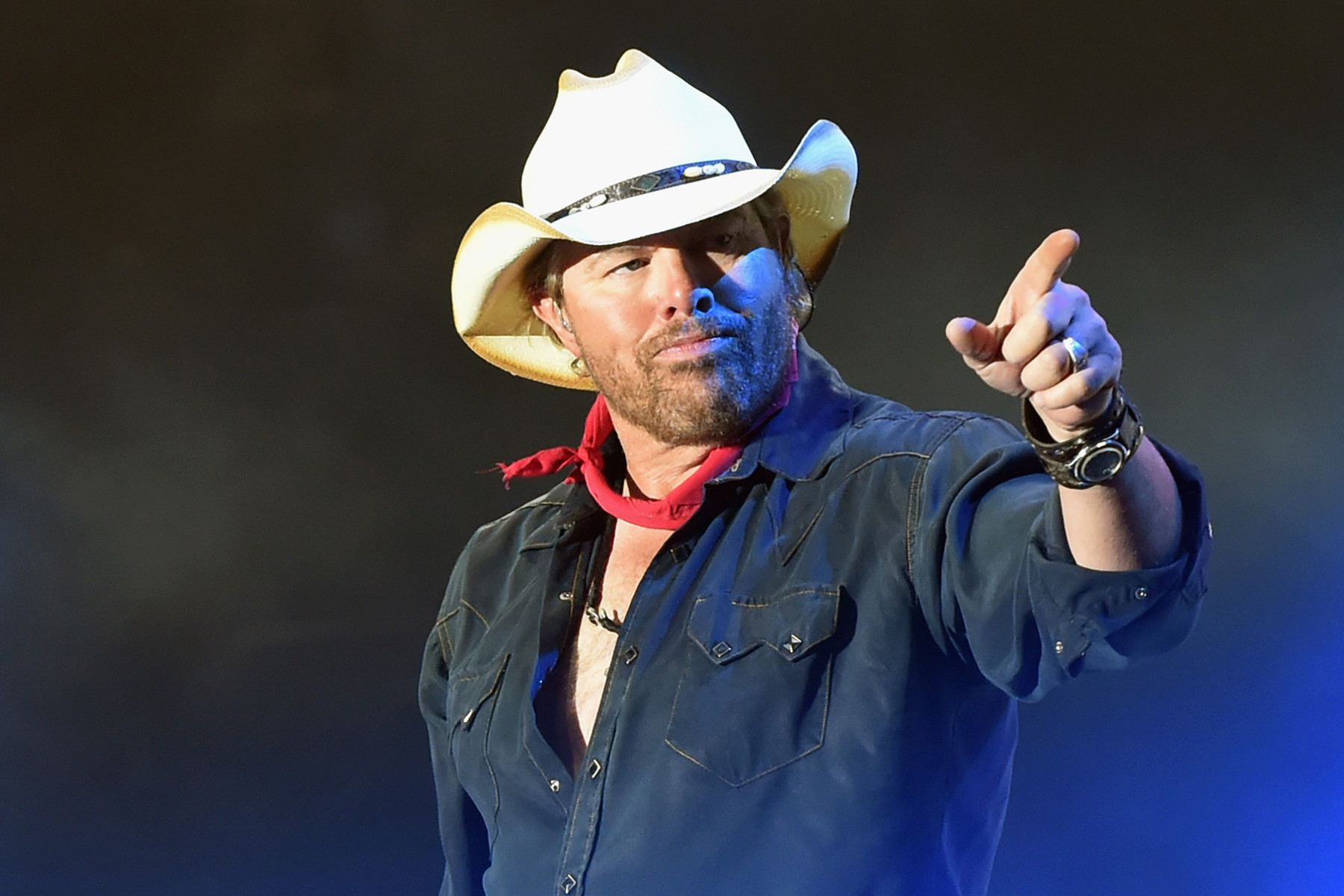 Toby Keith performs during Country Thunder Music Festival Arizona – Day 3 on April 7, 2018 in Florence, Arizona.
Toby Keith performs during Country Thunder Music Festival Arizona – Day 3 on April 7, 2018 in Florence, Arizona.
Image Credit: Rick Diamond/Getty Images for Country Thunder USA
“Don’t Let the Old Man In” emerged from a chance encounter between Toby Keith and Clint Eastwood at a celebrity golf tournament. Inspired by Eastwood’s spirited approach to aging, encapsulated in his phrase, “I don’t let the old man in,” Keith penned this poignant and introspective acoustic ballad about mortality and the will to live life to the fullest. The lyrics, “I wanna live me some more,” resonate with a universal desire to defy aging and embrace every moment. Keith’s weathered and emotionally raw vocal delivery adds profound depth to the song’s message. The imagery of the “old man” as an approaching force of time and decline, against which one must actively resist, is both powerful and moving. Featured in Eastwood’s film The Mule, “Don’t Let the Old Man In” gained further recognition and emotional resonance, particularly after Keith’s own moving performance of the song at the 2023 People’s Choice Country Awards, given his personal battle with illness.
‘Who’s That Man’ (1994)
 Toby Keith at the Holiday Star Theater in Merrillville, Indiana, January 25, 1994.
Toby Keith at the Holiday Star Theater in Merrillville, Indiana, January 25, 1994.
Image Credit: Paul Natkin/Getty Images
“Who’s That Man,” from Toby Keith’s sophomore album Boomtown, stands as a benchmark for modern country breakup songs, capturing the raw emotions of loss and regret. The song depicts a man revisiting his old neighborhood in his pickup truck, noticing subtle changes that trigger deeper reflections on his fractured family life. The newly paved road serves as a metaphor for the irreversible changes and the passage of time. The central emotional core of the song lies in the unspoken narrative of a marriage dissolved, leaving the protagonist driving past his former home, filled with longing and concern for his children. Keith’s delivery, tinged with barely suppressed emotion, amplifies the palpable sense of despair and regret. The simple yet powerful lines, “That’s my house and that’s my car/That’s my dog in the backyard,” evoke a profound sense of loss, regardless of the listener’s interpretation of the breakup’s causes, making it a deeply relatable and emotionally resonant track.
‘I Love This Bar’ (2003)
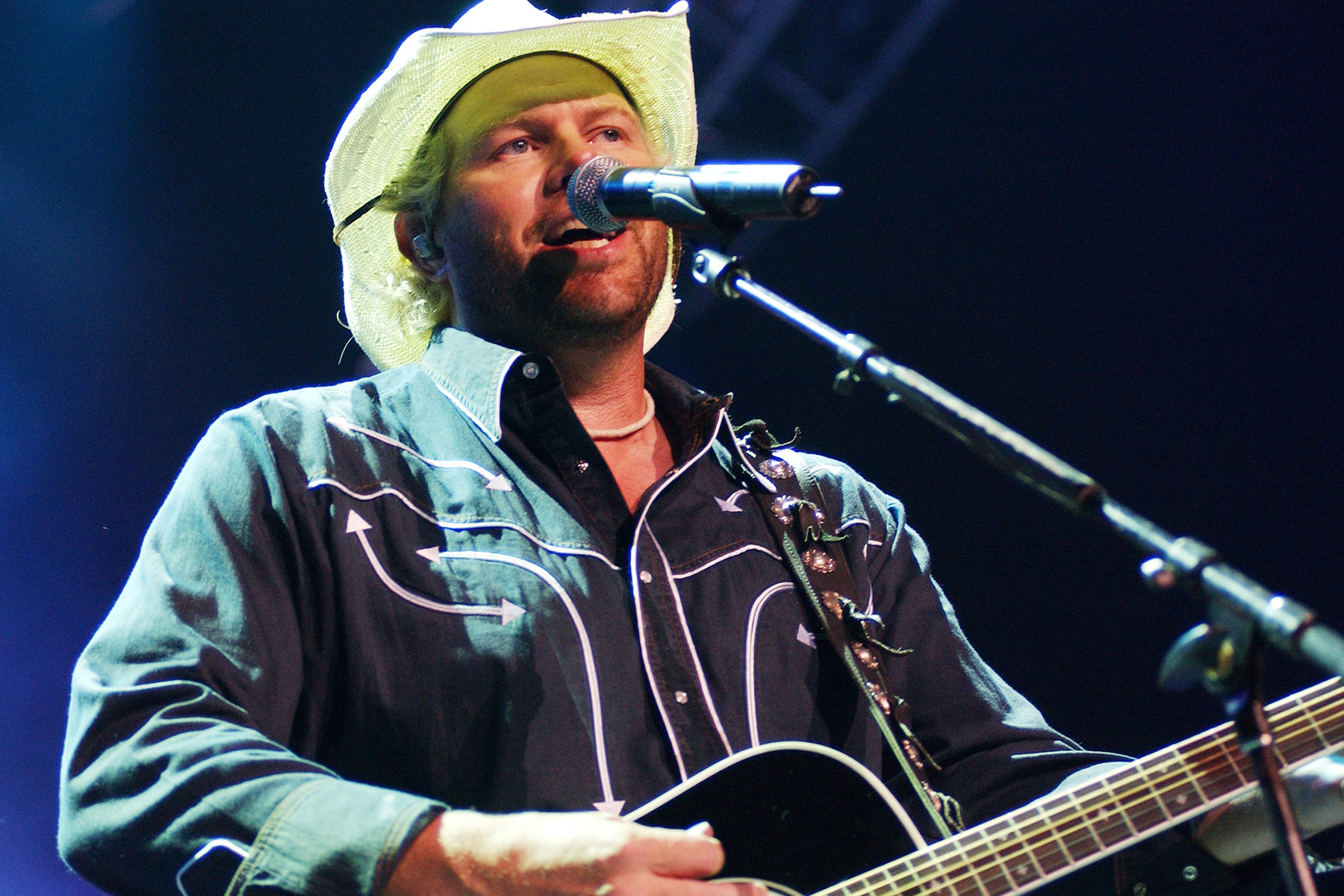 Toby Keith during Toby Keith in Concert in Los Angeles on August 25, 2003 at Staples Center in Los Angeles, California, United States.
Toby Keith during Toby Keith in Concert in Los Angeles on August 25, 2003 at Staples Center in Los Angeles, California, United States.
Image Credit: Annamaria DiSanto/WireImage
Toby Keith’s album Shock ‘N Y’all opened with “I Love This Bar,” an unashamed and celebratory ode to the quintessential American watering hole. This song paints a vivid picture of a bar as a social melting pot, welcoming a diverse cast of characters, from “yuppies” and “bikers” to “thirsty hitchhikers” and veterans. Keith’s warm and inviting delivery transforms the bar into a place of camaraderie and comfort, making the song a popular choice for happy hour playlists and a sing-along staple. The success of “I Love This Bar” extended beyond music, with the opening of the first I Love This Bar and Grill in Oklahoma in 2005, further cementing the song’s cultural impact and solidifying the bar as a central theme in Toby Keith’s persona and music.
‘Huckleberry’ (2002)
 Country artist Toby Keith performs at the Thomas & Mack Center November 1, 2002 in Las Vegas, Nevada.
Country artist Toby Keith performs at the Thomas & Mack Center November 1, 2002 in Las Vegas, Nevada.
Image Credit: Ethan Miller/Getty Images
While Toby Keith was predominantly known for his boisterous anthems and patriotic tracks, he consistently included softer, romantic ballads in his albums. “Huckleberry,” from 2002’s Unleashed, is a prime example, often overshadowed by the album’s more assertive hits like “Courtesy of the Red, White and Blue (The Angry American)” and “Beer for My Horses.” This tender acoustic song recounts a sweet childhood romance, reminiscent of classic coming-of-age country ballads. Often compared to Clay Walker’s “Check Yes or No,” “Huckleberry” evokes nostalgic imagery of school buses, county fairs, and prom nights. The lyrics trace the progression of young love through time, culminating in marriage and family. “Huckleberry” serves as a charming reminder of Keith’s versatility as a songwriter and his ability to tap into gentler emotions, proving that beneath the surface of beer-soaked patriotism, there was a softer, more sentimental side to his artistry.
‘Cryin’ for Me (Wayman’s Song)’ (2009)
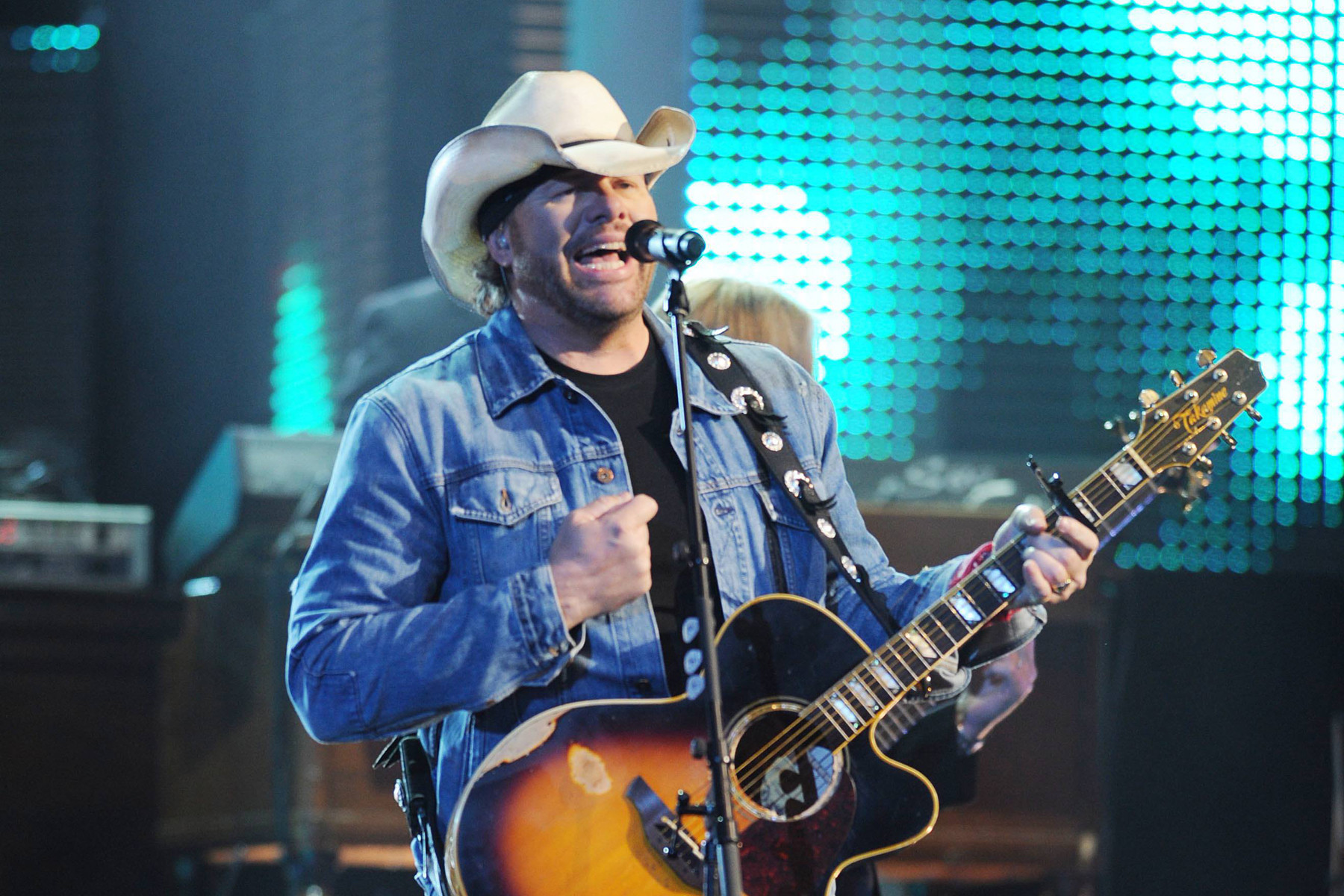 Toby Keith performs during the Nobel Peace Prize Concert at Oslo Spektrum on December 11, 2009 in Oslo, Norway.
Toby Keith performs during the Nobel Peace Prize Concert at Oslo Spektrum on December 11, 2009 in Oslo, Norway.
Image Credit: Sandy Young/Getty Images for Nobel Peace Prize
“Cryin’ for Me (Wayman’s Song)” is a deeply personal and moving tribute written by Toby Keith for his friend Wayman Tisdale, the former NBA player and jazz musician who passed away in 2009. Initially intended as a song for Tisdale’s funeral, “Cryin’ for Me” evolved into a tender ballad that became a Top Ten country hit for Keith. The song’s emotional weight is palpable, reflecting Keith’s profound grief and admiration for his friend. His inability to initially sing the song after writing it underscores the depth of his emotional connection to Tisdale. The resulting track is a poignant testament to friendship and loss, showcasing Keith’s capacity for vulnerability and heartfelt expression. “Cryin’ for Me (Wayman’s Song)” stands as a touching reminder of the personal stories and relationships that shaped Toby Keith’s music and his life.
‘Whiskey Girl’ (2003)
 Live performance of country western singer Toby Keith at the Staples Center.
Live performance of country western singer Toby Keith at the Staples Center.
Image Credit: Lawrence K. Ho/Los Angeles Times/Getty Images
Released shortly before Gretchen Wilson’s “Redneck Woman,” Toby Keith’s “Whiskey Girl” offers its own celebration of women who defy conventional stereotypes. For Keith, a self-professed bar enthusiast, a woman’s drink order becomes a source of poetic inspiration. The song playfully contrasts the “whiskey girl” with more traditionally feminine images, declaring her preference for whiskey over “wine and roses” and “champagne.” This lighthearted yet sincere ode to a down-to-earth woman quickly became a staple in Keith’s live performances. Beneath its seemingly simple and boozy surface, “Whiskey Girl” contains moments of genuine honky-tonk poetry, showcasing Keith’s ability to infuse humor and heart into his music. The song’s smooth delivery and catchy melody often overshadow its subtle lyrical nuances, such as the dramatic delivery of “no Cuervo Gold margaritas,” highlighting Keith’s knack for blending lightheartedness with unexpected emotional depth.
Toby Keith’s musical legacy extends far beyond these highlighted tracks. His contribution to country music is undeniable, marked by his distinctive voice, relatable songwriting, and charismatic persona. This list serves as an entry point into exploring the rich catalog of a true country icon, whose music continues to resonate with fans worldwide.
